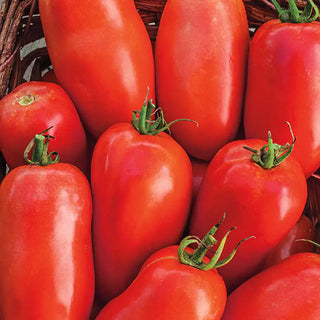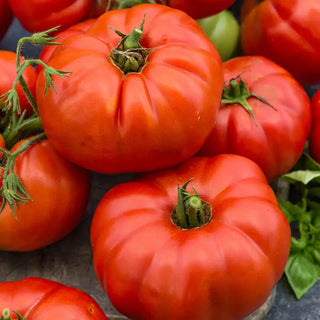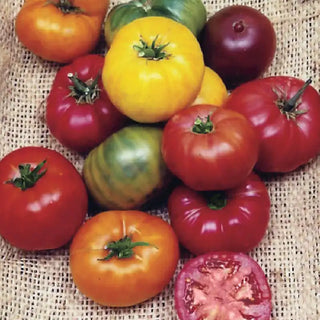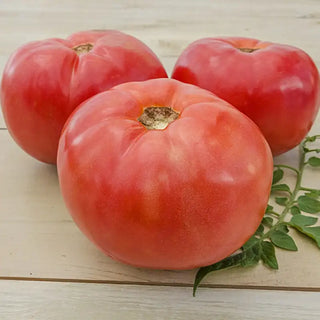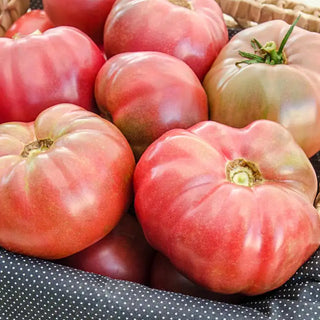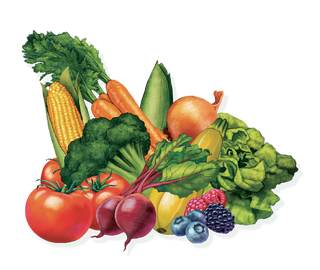Explore our premium collection of heirloom tomatoes at Gurney's. You'll find a diverse selection to enhance your home garden meals with varieties ranging from the classic Beefsteak to the unique Black Krim.
What are heirloom tomatoes?
Heirloom tomatoes are cherished varieties handed down through generations, usually for at least 50 years, and are valued for their rich flavors, vibrant colors, and distinctive shapes. Unlike hybrid tomatoes, heirlooms are open-pollinated, relying on natural methods like insects, birds, or wind for pollination, which allows their seeds to grow plants true to the parent. Known for their complex and robust flavors, heirloom tomatoes come in various colors, from red, pink, and yellow to green and even striped varieties.
How Do I Grow Heirloom Tomatoes?
Growing heirloom tomatoes requires attention to detail, but the reward is worth it. Here's a step-by-step guide:
- Choosing Seeds/Seedlings:
Begin by choosing a variety of heirloom tomatoes that match your taste preferences and suit your local climate. Some popular options include Brandywine, Cherokee Purple, and Green Zebra.
- Starting Seeds Indoors:
Begin by planting seeds indoors 6-8 weeks before the last frost date in your area--plant seeds about ¼ inch deep in small pots or trays. Keep the soil moist and provide plenty of light, ideally using grow lights. Learn more about seed starting on our blog.
- Transplanting Outdoors:
Once the danger of frost has passed and your seedlings are about 6-8 inches tall, it's time to transplant them outside. Choose a sunny spot with well-drained soil. Tomatoes need at least 6-8 hours of direct sunlight per day. Harden off the seedlings by gradually exposing them to outdoor conditions over a week. Plant them deep, burying about two-thirds of the stem, which helps develop a robust root system.
- Soil Preparation:
Amend the soil with compost or well-rotted manure to ensure it's rich in organic matter. Tomatoes prefer slightly acidic soil with a pH of 6.0 to 6.8. You can use a fertilizer specifically designed for tomatoes, like our Tomatoes Alive Fertilizer.
- Watering:
Water regularly to keep the soil consistently moist, but avoid waterlogging. Water at the base of the plants to prevent fungal diseases from wet foliage.
- Mulching:
Mulch around the base of the plants to retain moisture and prevent weeds.
- Staking/Caging:
Provide support for your plants by using stakes, cages, or trellises. This keeps the plants upright and prevents the fruit from touching the ground, which can cause rot.
- Feeding:
Fertilize with a balanced fertilizer or one specifically designed for tomatoes, following the instructions on the package.
- Pest and Disease Management:
Watch for common tomato pests like aphids and hornworms and fungal diseases like blight. Use organic methods, such as neem oil or insecticidal soap, to manage pests and remove any diseased foliage promptly.
- Harvesting:
Heirloom tomatoes are ready to harvest when they have reached their full color and are slightly soft to the touch. Pick them regularly to encourage more production.
By following these steps, you can enjoy a bountiful harvest of flavorful heirloom tomatoes!

